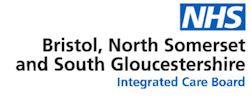

Avascular necrosis (AVN), also known as osteonecrosis, is a condition where bone tissue dies due to an interruption in blood supply. The femoral head is particularly vulnerable due to its unique vascular anatomy.
Key Points
High-risk groups include patients with corticosteroid use, alcohol abuse, trauma, sickle cell disease, and certain autoimmune or coagulation disorders.
Early diagnosis is critical to prevent joint collapse and the need for surgical intervention.
Epidemiology
Mean age of presentation in the UK is 58.3 years, with a prevalence of two per 100 000 patients. On average, AVNFH occurs earlier in life than typical osteoarthritis. It is more common in men and the highest prevalence is in men aged 25 to 44 and women aged 55 to 75. In the UK it is the third most common indication for total hip replacement in people under 50.(1)
Risk Factors
Trauma: e.g., femoral neck fractures, dislocation.
Non-traumatic:
Corticosteroid use (most common non-traumatic cause)
Alcohol abuse
Sickle cell disease
Systemic lupus erythematosus
Chronic renal failure
Coagulopathies or antiphospholipid syndrome
Decompression sickness (e.g., divers)
HIV infection or treatment-related
Clinical Features
Pain:
Insidious onset of groin pain (most common)
May radiate to thigh or buttock
Exacerbated by weight-bearing
Limited range of motion: Especially internal rotation and abduction.
Bilateral involvement: Can occur in up to 50% of non-traumatic cases.
An urgent referral should be made if AVN is suspected or confirmed.
Consider rheumatology/haematology input if autoimmune or haematological cause suspected.
Immediate assessment should be arranged (contact orthopaedic team on call or send to ED) if:
Rapidly worsening hip pain
Inability to weight bear
X-ray evidence of collapse or advanced AVN
Initial Assessment
History and risk factor review
Physical examination:
Antalgic gait
Reduced ROM
Positive Patrick (FABER) test
Investigations
If immediate referral is not indicated then consider the following investigations in primary care:
Consider immediate (same-day) referral if there are red flags.
If no red flags then refer to the Musculoskeletal Interface (MSKI) Service
(1) Avascular necrosis of the hip | The BMJ
(2) Differential diagnosis | Greater trochanteric pain syndrome | CKS | NICE
(3) Avascular Necrosis Femoral Head - Physiopedia
Efforts are made to ensure the accuracy and agreement of these guidelines, including any content uploaded, referred to or linked to from the system. However, BNSSG ICB cannot guarantee this. This guidance does not override the individual responsibility of healthcare professionals to make decisions appropriate to the circumstances of the individual patient, in consultation with the patient and/or guardian or carer, in accordance with the mental capacity act, and informed by the summary of product characteristics of any drugs they are considering. Practitioners are required to perform their duties in accordance with the law and their regulators and nothing in this guidance should be interpreted in a way that would be inconsistent with compliance with those duties.
Information provided through Remedy is continually updated so please be aware any printed copies may quickly become out of date.